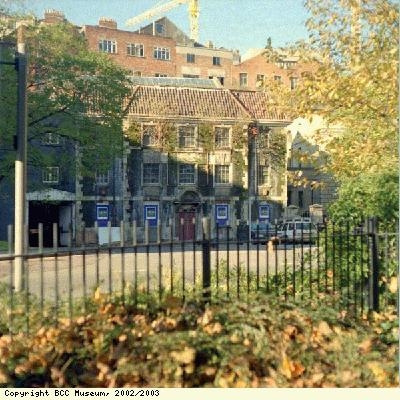Page 1 of 1 pages
Historic site, Lewin’s Mead Sugar House

Description:
Historic site, Lewins Mead Sugar House, Narrow Lewin’s Mead, Bristol. This modern photograph is of the former sugar house. This building, now much altered, was once an important sugar house, used to store and process imported sugar from the Caribbean. In the 17th century sugar was a luxury item but in the late 18th century it was enjoyed by an increasing number of people to sweeten tea and cocoa. It was also used in the production of rum. The increased demand for African slaves was due to this popularity of sugar in the 18th century. By the second half of the18th century Bristol was specialising in processing the raw sugar which came from the plantations in the Caribbean. By 1760 the city had about 20 sugar houses like this one. Many sugar merchants went on to own large estates in and around Bristol. The Pope family, who owned one of the two sugar houses in Lewin’s Mead, started as grocers and soap makers. They went into the sugar trade and then became bankers.
With thanks to the authors of the Slave Trade Trail around Central Bristol, Madge Dresser, Caletta Jordan, Doreen Taylor.
Chocolate was first used as a drink, sweetened with sugar to mask the bitter flavour of the chocolate. Later it was used for making eating chocolate. At this period, most people drank beer, wine or spirits. Water was not safe to drink, tea coffee and chocolate were expensive. Quakers promoted drinking chocolate as an alternative to alcohol.
Date: 17th-18th century
Copyright: Copyright BCC Museum
Page 1 of 1 pages

